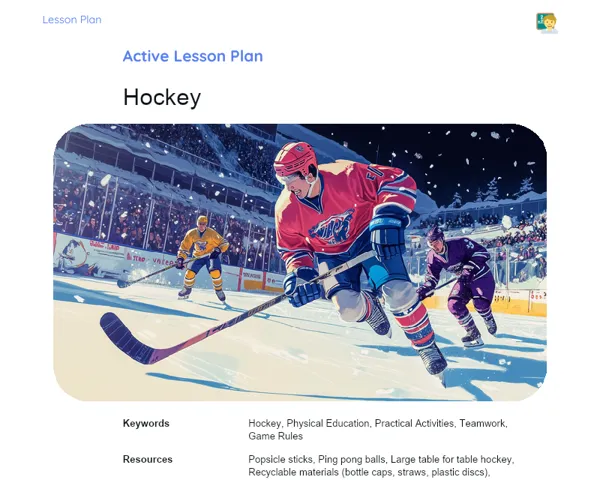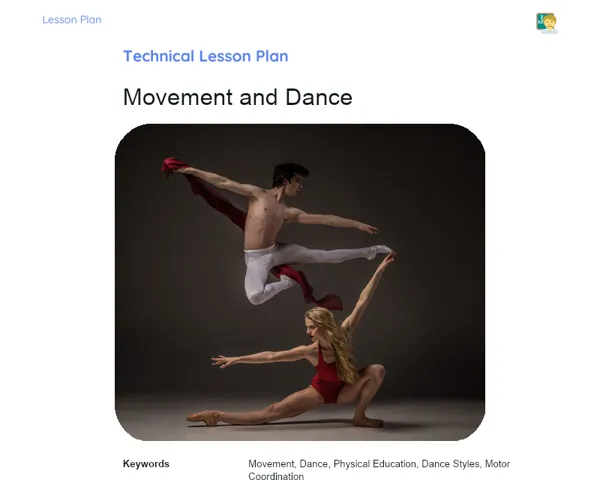Lesson Plan Teknis | World Fights
| Palavras Chave | Martial Arts, Physical Education, Karate, Muay Thai, Brazilian Jiu-Jitsu, Boxing, Judo, Taekwondo, History of Martial Arts, Techniques of Martial Arts, Martial Arts Tournaments, Cultural Impact, Sports Careers, Martial Arts Workshop, Discipline, Respect, Self-Confidence |
| Materiais Necessários | Projector or TV for video viewing, Computer with internet connectivity, Research materials (books, articles, internet), Large space for practical demonstrations, Mats for practice activities, Suitable clothing for martial arts practice (gis, gloves, etc.), Camera or smartphone for capturing presentations, Whiteboard and markers for note-taking, Notebooks or sheets for students' annotations |
Objective
Duration: (15 - 20 minutes)
The aim of this section of the lesson plan is to equip learners with a solid understanding of the diverse martial arts practised globally, their origins, and their evolution, as well as the competitive settings they exist within. This knowledge is vital for cultivating practical skills that can be directly applied in the job market, particularly in fields like physical education, sports coaching, and event management.
Objective Utama:
1. Identify major martial arts from across the globe and their distinct features.
2. Explore the history and evolution of various martial arts.
3. Recognize significant tournaments and competitions in martial arts worldwide.
Objective Sampingan:
- Enhance research and critical thinking abilities.
- Encourage interest in different cultures and sporting traditions.
Introduction
Duration: (15 - 20 minutes)
This part of the lesson plan aims to provide students with an engaging introduction to the diversity of martial arts globally, igniting their interest and demonstrating the cultural and practical significance of this knowledge. This sets the foundation for more in-depth and application-focused learning in the next phases.
Curiosities and Market Connection
💡 Did You Know: Brazilian Jiu-Jitsu evolved from the adaptation of Japanese Jiu-Jitsu by the Gracie brothers in Brazil? Boxing is one of the oldest recorded sports, with evidence of competition going back to 3000 B.C. in Ancient Egypt! Today, many martial arts, like Taekwondo and Judo, are Olympic sports. 🌍 Career Insight: Understanding these martial arts can lead to various career paths, such as martial arts instructor, sports coach, event planner, or roles in physiotherapy and sports rehab.
Contextualization
Martial arts form a core part of the culture in many nations, possessing a rich and varied history. From Karate in Japan to Muay Thai in Thailand, each style tells a unique story and features specific techniques that have been honed over centuries. Gaining insights into these disciplines is crucial, not only for physical prowess but also for appreciating cultural and historical contexts.
Initial Activity
🎥 Initial Activity: Present a short video (about 3 minutes long) showcasing a variety of martial arts from around the world, emphasizing their unique features. Post-viewing, pose the engaging question: 'Which martial art piqued your interest and why?' Encourage learners to briefly share their thoughts.
Development
Duration: (60 - 65 minutes)
This stage aims to deepen students' comprehension of the range of martial arts worldwide, prompting research, application, and critical reflection. By the conclusion, students will have a better grasp of the characteristics, history, and cultural significance of these martial arts, alongside enhancing their presentation and teamwork capabilities.
Topics
1. History and Origins of Martial Arts
2. Features and Techniques of Various Martial Arts
3. Major Tournaments and Competitions
4. Cultural and Societal Impact of Martial Arts
5. Careers Linked to Martial Arts
Thoughts on the Subject
Encourage learners to contemplate how different martial arts impact cultures and societies around the globe. Ask: 'In what ways can martial arts foster values such as discipline, respect, and self-confidence?' Facilitate a group discussion to allow students to share their views and personal anecdotes related to this topic.
Mini Challenge
Mini Challenge: Crafting a Martial Arts Workshop
Students will work in groups to create a mini workshop on a specific martial art. Each group will select a martial art and prepare both a practical and theoretical presentation covering a brief history of the style, its key techniques and rules, as well as a simulation or demonstration of the techniques learned.
1. Split the class into groups of 4 to 5 learners.
2. Each group must choose a martial art (e.g., Karate, Judo, Muay Thai, etc.).
3. Guide the groups to investigate the history, techniques, and regulations of their chosen martial art.
4. Groups should prepare a 10-minute presentation that includes:
5. A concise historical introduction to the martial art.
6. Demonstration of the primary techniques and movements (to be performed safely and under supervision).
7. Overview of the basic rules and competition framework.
8. Following the presentations, facilitate a Q&A session between groups.
Encourage the practical application of the knowledge gained about diverse martial arts while fostering research, presentation, and teamwork skills.
**Duration: (40 - 45 minutes)
Evaluation Exercises
1. Identify three main features of Karate and discuss the relevance of each.
2. Trace the origin and development of Judo, including key figures and its recognition as an Olympic event.
3. Differentiate between Muay Thai and Boxing, focusing on their techniques and rules.
4. Identify three major international martial arts tournaments and give a brief overview of each.
5. Engage in group discussions: How can martial arts serve as a tool for social inclusion and personal growth?
Conclusion
Duration: (10 - 15 minutes)
The objective of this segment of the lesson plan is to solidify students' learning, promoting reflection on how the information gained can be applied in various contexts. This aids in cementing the content and appreciating the practical and cultural significance of the martial arts discussed, motivating students to carry forward what they have learned.
Discussion
🗣️ Discussion: Facilitate a final conversation encouraging students to reflect on what they’ve learned. Pose the question: 'How can the skills and knowledge acquired about various martial arts be useful in your everyday lives and future careers?' Urge students to share their views on the cultural, social, and professional impacts of martial arts. Reinforce the vital values like discipline, respect, and self-confidence that were highlighted throughout the lesson.
Summary
📚 Summary: Provide a brief recap of the central points covered in the lesson, including the history, characteristics, and techniques of the discussed martial arts, along with key tournaments and competitions. Remind students of the practical activities, including the Mini Challenge of crafting a Martial Arts Workshop, and underline the knowledge they have gained.
Closing
🔚 Closure: Discuss how the lesson intertwined theory and practice by translating historical and technical knowledge into practical activities. Emphasize the relevance of the topic for developing both physical and social skills applicable in daily life and the job market. Highlight the importance of continuing to learn about and appreciate different cultures and sporting practices, fostering inclusion and personal growth.



